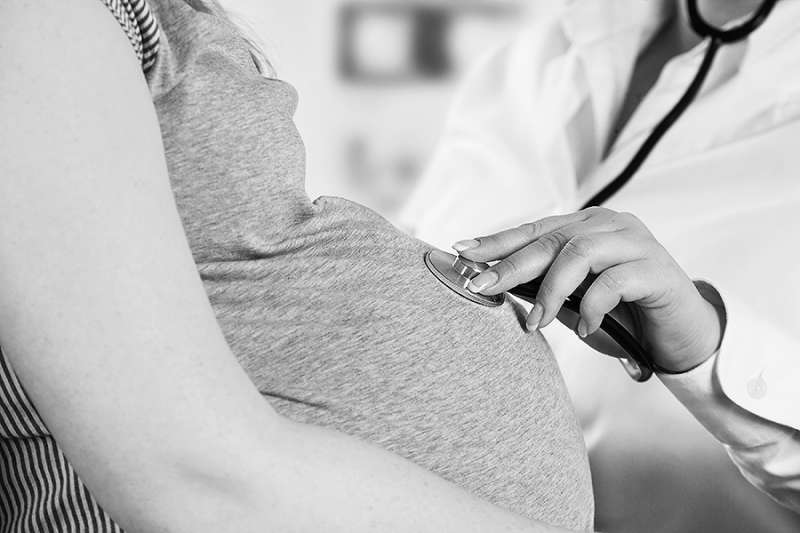Following an op-ed in the New York Times claiming that all pregnancies are life-threatening, a Catholic doctor emphasized that pregnancy is a natural and healthy condition, and that complications which may arise can be treated without abortion.
“[Pregnancy] is not a serious health risk to the vast majority of women in this country. And unless these women have some underlying medical problems to begin with, most pregnancies are perfectly normal by any means,” said Dr. Mary Jo O’Sullivan, a high-risk obstetrician and Professor Emeritus of Obstetrics and Gynecology at the University of Miami.
“There are pregnancies that are complicated by diabetes, hypertension, previous Caesarean sections, some of those things that he mentioned. But they are uncommon, and with good medical care there is no reason why a woman who is desirous of continuing her pregnancy cannot do so,” she told CNA.
In an op-ed published Tuesday in the New York Times, a Colorado-based late-term abortion doctor argued that because women are more likely to die in childbirth than from complications related to an abortion, “pregnancy is dangerous; abortion can be lifesaving.”
“Pregnancy is a life-threatening condition. Women die from being pregnant. We have known that for thousands of years,” abortion doctor Warren Hern wrote May 21.
Hern wrote the piece in response to recent developments related to abortion in Alabama, where the governor recently signed a near-total abortion ban into law. In Alabama last year, nearly six out of every 100,000 white women who gave birth died as a result of their pregnancy. Among black women, it was 27.6, he said.
Hern claimed from this data that a ban on abortion would disproportionately harm black women, citing data suggesting an abortion procedure is much less risky than giving birth. He offered a list of potential complications that can result from pregnancy, as well as risk factors that can make pregnancy, in his view, especially dangerous.
O’Sullivan argued, however, that the op-ed was “bombastic” and employed scare tactics. She reiterated that although any pregnancy carries some risk, it is not a “serious” threat to a woman’s health, especially in the United States. The United States has a higher maternal death rate than Europe, for example, but maternal deaths are still very rare, even in rural areas.
“She doesn't have a 50/50 chance of dying, unless she has some very serious cardiac problems. So I really think that this is scare tactics to prevent women from getting pregnant at all.”
O’Sullivan acknowledged that maternal death rates are higher in black women, especially those of lower socioeconomic status. She pointed out that these women also have a higher risk of hypertension, obesity, diabetes, poor nutrition, and previous Caesarean sections, all of which are risk factors for maternal death.
Better medical care to address these issues is what is needed, she said, especially for women who are at risk for conditions like hypertension, who should seek medical care earlier rather than later in their pregnancy.
For the United States overall, the maternal mortality ratio was 20.7 in 2018, meaning that about 20 mothers die for every 100,000 live births. The rate of death for mothers in Sierra Leone, with the highest maternal mortality ratio in the world, is seventy times that.
In his piece, Hern argued, “Pregnancy itself poses a ‘serious health risk’ — including the risk of dying and losing all bodily functions.” He said that “A woman’s life and health are at risk from the moment that a pregnancy exists in her body, whether she wants to be pregnant or not.”
O’Sullivan expressed doubt that the statistics Hern quotes were entirely accurate.
“There are still issues with proper recording of maternal deaths,” she said. “We're getting better, but we're very poor at that in the United States. And also, what we call a 'maternal death' might be a different definition than other countries may use. So we have to be careful with that too.”
In addition, the statistics Hern used to demonstrate the “safety” of abortion procedures did not include adequate follow-ups on the women it studied, she added, meaning there may have been deaths or complications later on that the study missed.
O'Sullivan pointed out that throughout her medical career, she has aided women through many difficult pregnancies, and had never once had to perform an abortion.
“Abortion is not absolutely indicated under any circumstances,” she said.
There are occasions, she clarified, when a lifesaving procedure for a mother may indirectly result in a child’s death, but this is not the same as an abortion. An example, she said, could be the situation of a severe hemorrhage in a mother’s placenta, known as Disseminated intravascular coagulation (DIC).
“In that case, we have to deliver the placenta,” she explained.
“The secondary thing that's going to happen is that that baby is not going to survive...the intent is not to kill the baby, but the intention is to remove the placenta. So in that case, yes, if you do not deliver her, [the mother] could well die.”
Even a situation like DIC is extremely rare, she reiterated.
“The most important thing is that pregnancy is generally followed by a very good, healthy outcome for both mother and baby,” she concluded. “And with good medical care, even better.”
Users who left comments on the New York Times website argued that all successful abortion procedures, even if they may be “safer” for the mother, result in the death of the unborn child.
“Every child has a right to life. Every child,” O’Sullivan said.

